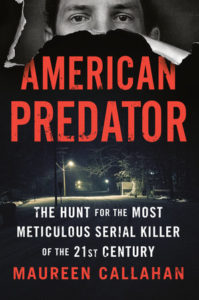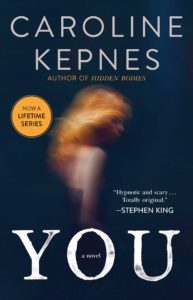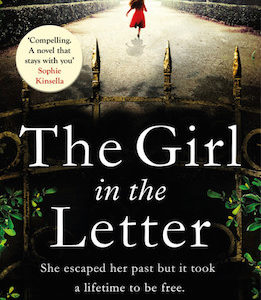What’s so strange, don’t all girls play games? This is the tag line to set up my new novel Gretchen—a question asked as the theme of the book. And what games are played in Gretchen? A number, in fact: Scrabble, jigsaw puzzles, who-flinches-first, a tree-top bird bingo challenge course. All are used to show obsession gone awry, to show psychological games played out in tangible form. Innocent “play” with jigsaws is turned into a twisted nightmare. In fact, the title character barks back that jigsaws “are not games,” a notion she violently rejects, for puzzles are not leisure to her. They are an obsession so fierce, they are her very being. And true, the Supreme Court did rule that jigsaws are not games, for tax purposes, and perhaps they’re not capital-letter “Games” under some technical definition, but that is not the point. Puzzles are a form of leisure activity that people do turn in to challenges for themselves and others. So, games. Who cares about tax law anyway?
Games are so pervasive in horrors and thrillers and horror-thriller hybrids, it’s difficult to narrow down to a few suggested examples. For this article, I’m going to hit on books that have a range of genres, because I reject attempts to pigeon-hole all books and authors into strict, singular identities. I’m also not going to be hyper literal about games in all instances either—I’ll go metaphorical as well. All of the books in this article are ones I’ve read and highly recommend (with the exception of one that I really, really want to read), but I am certain there are hundreds more deserving titles that fit the bill. Why is that? Why are games so prevalent in horrors and thrillers?
My use of games in writing thriller/horror/gothic hybrids is to showcase something innocent twisted by obsession and derangement. I find, when contorted so, games help blur the lines between thriller and horror and gothic…For me, my use of games in writing thriller/horror/gothic hybrids is to showcase something innocent twisted by obsession and derangement. I find, when contorted so, games help blur the lines between thriller and horror and gothic, a blending of genres I am very interested in working on and reading. What is more innocent than a bright-eyed sunny day in your best friend’s basement playing house or the now-forgotten gem of a board game PayDay? Perhaps the notion of games brings you back to endless riveting hours trying to save the princess in Mario Brothers before your real-life brothers win or break the joystick. Now what if those memories are changed to incorporate elements of obsession, murder, horrific tragedy? Well then, the entire balance beam upon which your childhood rests, collapses. Your safety net is gone. That’s a creepy thought; that could get downright horrific.
Carnival games are meant to be an innocent way of losing tons of cash. Sure, $10.00 to loop a ring around a bottle to win a lolygagging, blameless goldfish. What could go wrong? Everything could go wrong. We all know, everything usually does go wrong. In fact, Mr. Goldfish typically flips belly-up on the ride home. And this is where we start bleeding into the black. What if we take it a step further on the creepy scale? What if your obsession over the dead goldfish causes you to scream and cry so much you distract your now penniless mother to wreck the car? The last thing you remember is a severed head flying through the obliterated windshield. You wake up a hundred yards away in a stream with the frame of a bicycle around your torso—you are now the bottle, the bike is now the ring. And the dead-prize goldfish flops out of your slack, bloodied mouth like a lip hook. Did I take it too far? I can go further.
Carnival games are easy targets for showcasing the twisting of innocence into blood-curdling horror, the taking of one or two or three steps along the creepy-to-horrortown spectrum. One need look no further than Jordan Peele’s absolute masterpiece Us—a masterclass in thriller/horror/sci-fi genre blending (with pitch-perfect sprinkles of comedy) that takes carnival game creepiness to a whole new level.
Another old-school game with nascent, underlying dread ripe for thriller/horror exploitation is “hide and seek.” Hide and seek is as much a staple of childhood as is a dinner of fishsticks and Hi-C, a naked, balding Barbie (complete with hair ripped out by a chewing dog), a bedtime story with cookies and milk, and of course, monsters under the bed. Google search “hide and seek and thriller or horror” and see all the books and movies that pop up. Remember that intense scene in M. Night Shyamalan’s The Visit when the kids play hide and seek under the floorboards? Yikes, Grandma!
And I’m not even going to mention all the horrors and thrillers that incorporate Ouija.
Indeed, horrors and thrillers are so intertwined with games, there’s a whole cottage industry of horror/thriller board games and several with novel tie-ins. Stephen King’s IT, for example, has a few board games.
So where do I start with recommendations on horror, thriller, and/or gothic novels that use games as a device to drive dread? To even approach this vast field, I’ve selected four categories to work within: playing house, mazes and escape rooms, codes and cyphers, and life as a game.
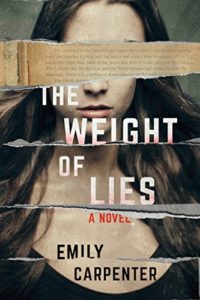
PLAYING HOUSE
I can remember saying to a friend, “I’ll be the mom this time only if I get to be the Principal when we play school office,” while stuffing a pillow under my shirt—because I was “pregnant mom.” Playing house is something many children do. Imagination, setting themselves in the future. All very experimental and immersive. How creepy could that be?
Emily Carpenter answers that question in the marvelous Weight of Lies: Very creepy.
Weight of Lies still stuns me. I read it when it released and I’m just still shook. The Book Gods like to peg each book into one or two neat little categories, and here they’ve got Weight of Lies in “Women’s Thriller Fiction” and “Gothic Fiction.” Those fit, but I would say Weight of Lies is a perfect example of the blending of thriller, gothic, and horror, for all genders and demographics. Indeed, one of the things making Weight of Lies so incredible are interspersed chapters from a horror titled Kitten (a book within a book, which weaves in to the main thriller tale). The entirety of the novel is set in an amazing gothic hotel called Ambletern, the only hotel on a southern island. Stop! It’s too good. Trust me, if you love gothic settings, nothing beats Ambletern. Take me to Ambletern!
Anyway, Kitten is creeeeeeppppppppy. I love her to death. And she will love you to death. Whenever Kitten plays house or dress-up, there’s always a sense of death lingering, like murderous fog. Carpenter gives us scenes that start off with all the innocence of children playing, but takes those steps further and further along the creepy-horror spectrum. In one such instance, Kitten and Cappie, another child, are playing house outside with innocent enough items: rocks, tree bark….and….subtly dial up the creep factor…. “dried locust shells.” An observer to this play of house states that Kitten and Cappie organized these items “into some order only they understood.” Yeesh! Look, when kids play in a way that only they understand, it’s sort of like cats circling your legs when you walk down the stairs. Seems innocent enough, sure, but you can easily imagine they’re plotting your murder.
Kitten’s father remarks to a would-be nanny, “Kitten is to be allowed to play any game that amuses her, with no restriction. Mrs. Murphy and I believe children should be encouraged to pretend.”
Yeah, well. We all know how no restrictions and pretending go…and Weight of Lies proves they can go real dark, real fast.
I cannot recommend Weight of Lies too much. It is one of my top five reads over the last several years. A perfect blending of gothic, thriller, horror….and gameplay.
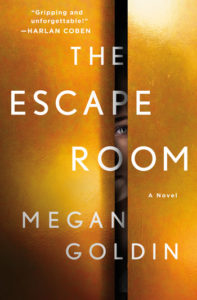
MAZES AND ESCAPE ROOMS
Rich people have grand mazes on their acres of property. What’s so creepy about that? EVERYTHING!
The maze “game” is simple: get through the maze the fastest. Escape rooms are similar: get out as fast as you can.
Mazes can be beautiful, sculpted bushes. They can be “haunted” Halloween fun. Escape rooms can be as innocent as corporate team-building and joyous birthday parties. But it’s easy to see how mazes and escape rooms can slide into terror. Will you ever get out? Ever?
J.K. Rowling uses a maze of challenge and terror in Harry Potter and the Goblet of Fire, in which Harry faces a gloomy and dark, super creepy maze in the Triwizard Tournament. A magnificent blending of thriller, horror, and sci-fi. Maybe every person on the planet has read all of Harry Potter by now, I don’t know, but it’s always good to revisit Hogwarts.
A new thriller to be released this summer, The Escape Room, by Megan Goldin, is getting rave advance praise. I really want to read this one. The entire premise is built around that innocent-enough corporate team-building game of working together to escape a room. What could go wrong? Goldin suggests: everything. Perfect!
And I would mention a great example of twisting the “maze” game to horror, the grand finale of The Shining, BUT, that only happened in the movie version. In Stephen King’s classic novel, John, not Jack, dies when a boiler explodes. (Side note: read about all the differences between film and book here).
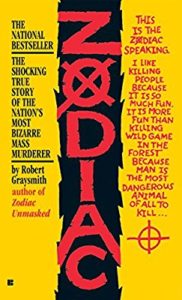
CODES AND CYPHERS
Codes and cyphers are a part of innocent childhood play (decoder rings and puzzles) and extend to actual spy work. They are challenges in either arena and thus ripe for exploiting down the creepy-horror scale.
I loved and devoured, like millions of readers, Dan Brown’s The DaVinci Code. Boiled all the way down, stripping out all of the religious imagery and iconography, The DaVinci Code is just one big fun game of code cracking. To me it is part mystery, part thriller, and part horror.
Then there’s true crime novels. Stories about psychopaths who are so bored with life, they create their own codes and games. Enter the classic Zodiac by Robert Graysmith. Most everyone knows, The Zodiac Killer sent cryptic and taunting cyphers to police. And he has yet to be identified.
LIFE, AS A GAME
Life is a literal board game. And, not to be too philosophical here, but life itself is a game. I mean, right?
Stepping more into metaphorical gameplay, I cannot recommend enough the absolute gripping American Predator by Maureen Callahan. This 2019 true-crime about serial killer Israel Keyes tells of Keyes’ mental sickness, so malignant he created the most sadistic, random game for himself. He hid kill kits around the country, would travel in to a location, by way of a convoluted, f-ed up route, discover a random victim or victims that very day, rape and kill them, and dispose of their bodies in a gruesome ritual of butchery.
For fiction, my tip-top, absolute favorite example of metaphorical gameplay with life, the one I sat at a pool reading for eight hours straight and didn’t move a single inch, is You by Caroline Kepnes. You centers around Joe, a psychopath, who (my interpretation), bored with life and disgusted by modern society, finds a target (Beck) around whom he creates for himself various challenges to snag her. At it’s core, and again this is my interpretation, Beck is just a game to Joe—a way to make the clock spin ‘round. You is one of the best blends of thriller and horror, with fantastic satirical timing, I have ever read. I am zero percent surprised that the Netflix series based on it is a huge hit—in fact, I know many readers of the book weren’t surprised. Before the Netflix series, You had achieved a cult-like following, a fan-base (including me), obsessed with Joe and his dark shenanigans. Hidden Bodies, the sequel, is equally as fantastic. And I am led to believe, based on Kepnes’ Twitter hints, a third installment is on the way. I simply cannot wait.


